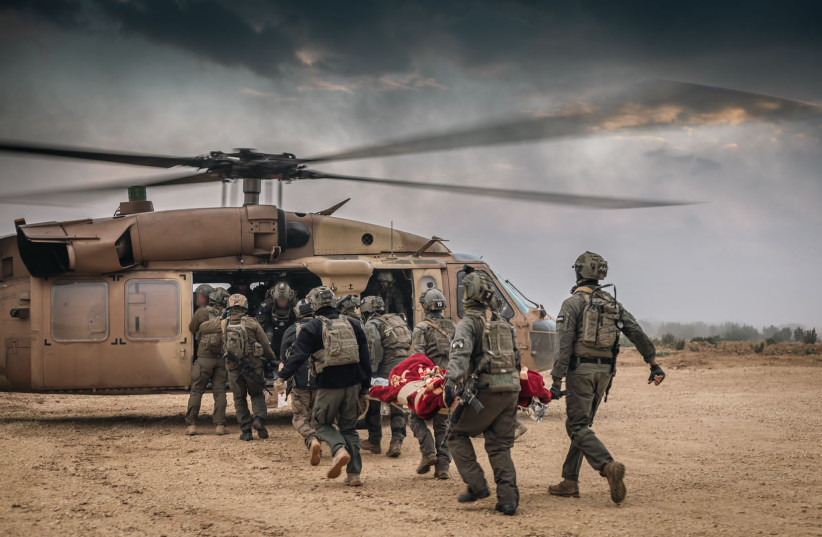Tens of thousands of reservists who served in the IDF are now gradually returning from the battlefield alongside those who continued to work during the fighting. Those coming home after long weeks and months are discovering that the real struggle has only just begun.
A new study by the Israeli Institute for Occupational Safety and Health (IIOSH) exposes the health costs of war: Forty-three percent of the soldiers suffer from stress and anxiety; 39% experience severe sleep problems; and 41% reported double the amount of neck and back pain, compared with last summer
The conflict that began on October 7 subjected workers to multiple stressors and anxieties. A representative sample of 1,498 workers examined the physical and psychological effects.
Thirty-five percent of workers lost close family members or relatives; 40% worry about their relatives in the reserves; and 30% fear the economic situation resulting from the war.
How has the Israel-Hamas war harmed returning reservists?
The massive pressure during the war significantly affected the physical and mental health of workers; 43% of workers admitted that they suffered from stress and anxiety, compared with 24% before the war, while 39% reported very high levels of fatigue, compared with 25% before the war.

High fatigue, beyond being a mental state and its connection to sleep difficulties and depression, also poses a health risk to workers and is associated with increased muscle-skeletal pain, cardiovascular risks, and safety hazards due to fatigue, lack of concentration, motivation diverted to other areas, and more.
Findings show that high percentages of workers reported muscle-skeletal pain, affecting their performance, compared with before the war. Neck and shoulder pain increased significantly; 41% reported pain-limiting activity, compared with 19% before the war.
The higher the fatigue level, the higher the percentage of workers involved in workplace accidents; 7% reported an accident during their work in the first two months of the war, compared with 11% of workers who reported an injury due to an accident over the past year. If the trend of the first two months of the war continues, the coming year poses increased risks to workers’ safety.
However, 57% of the respondents indicated that their work contributes significantly to their overall well-being, compared with 13% who found their work emotionally challenging during wartime.
The IIOSH recommended that employers develop work protocols that outline the organization’s commitment to preserving the mental health of employees. Such protocols should include measurement and identification methods, defining working conditions goals, and prevention and treatment methods.
The basic step in dealing with a problem is the ability to identify and address the existing situation. Also important is being alert and continuously monitoring patterns or behaviors exhibited by employees indicating mental distress, such as excessive sick leave, high turnover rates of employees, fatigue and lack of concentration, irritability, decrease in performance indicators, or periodic surveys.
One must not wait for the situation to worsen. As a preventive step, employers need to identify what creates stress for their organization’s employees.
It is also advisable to seek personal or professional assistance in assessing the situation and acting to change it in time in these directions, i.e., improving communication systems and organizational bureaucracy; reducing unnecessary burdens; using evaluation systems and feedback intended for development; adapting work content, work environment, and team role definitions to reduce stress factors and address what impedes role performance; adjusting roles for employees and training them for role changes so that there is a high alignment between their tendencies and training and the tasks they are required to perform.
Work is an important part of life and occupies a considerable portion of our time, but it is important to create a proper balance between it and other aspects and commitments in the lives of employees that they need to fulfill and also allow them to rest, “clearing their heads,” and replenishing their energies.
IIOSH Director-General Dr. Miki Winkler said stress and mental fatigue are now recognized as an inseparable part of health risks in the workplace and a risk to employee safety, and these phenomena have intensified even more during the Gaza war. Employers need to understand that preserving the mental health of their staff can also affect their productivity for the company, he said.
